|
[1]
|
Nigam PS (2017) An Overview of Microorganisms' Contribution and Performance in Alcohol Fermentation Processing a Variety of Substrates. Curr Biotech 6: 9–16. doi: 10.2174/2211550105666160720162939

|
|
[2]
|
Singh A, Rathore D (2017) Biohydrogen: Next Generation Fuel, In: Singh A, Rathore D (Eds.), Biohydrogen Production: Sustainability of Current Technology and Future Perspective, India, Springer, 1–10.
|
|
[3]
|
Sims REH, Schock RN, Adegbululgbe A, et al. (2007) Energy supply, In: Metz B, Davidson OR (Eds)., Climate change 2007: mitigation. Contribution of working group III to the fourth assessment report of the intergovernmental panel on climate change, Cambridge, UK, Cambridge University Press.
|
|
[4]
|
Singh A, Olsen SI (2012) Key issues in life cycle assessment of biofuels, In: Gopalakrishnan K, et al. (Eds.), Sustainable bioenergy and bioproducts, green energy and technology, London, Springer-Verlag, 213–228.
|
|
[5]
|
Singh A, Pant D, Korres NE, et al. (2010) Key issues in life cycle assessment of ethanol production from lignocellulosic biomass: Challenges and perspectives. Bioresource Technol 101: 5003–5012.
|
|
[6]
|
Singh A, Smyth BM, Murphy JD (2010) A biofuel strategy for Ireland with an emphasis on production of biomethane and minimization of land-take. Renew Sust Energ Rev 14: 277–288. doi: 10.1016/j.rser.2009.07.004

|
|
[7]
|
Singh A, Nigam P, Murphy JD (2011) Mechanism and Challenges in commercialisation of algal biofuels. Bioresource Technol 102: 26–34. doi: 10.1016/j.biortech.2010.06.057

|
|
[8]
|
Singh A, Nigam P, Murphy JD (2011) Renewable fuels from algae: An answer to debatable land based fuels. Bioresource Technol 102: 10–16. doi: 10.1016/j.biortech.2010.06.032

|
|
[9]
|
Singh A, Olsen SI, Nigam P (2011) A viable technology to generate third generation biofuel. J Chem Technol Biot 86: 1349–1353. doi: 10.1002/jctb.2666

|
|
[10]
|
Pant D, Singh A, van Bogaert G, et al. (2011) Bioelectrochemical systems (BES) for sustainable energy production and product recovery from organic wastes and industrial wastewaters. RSC Adv 2: 1248–1263.
|
|
[11]
|
Singh A, Nigam P (2014) Microbial biofuels production, In: Darvishi FH, Hongzhang C (Eds.), Microbial Technology: Progress and Trends, USA,CRS Press Taylor & Francis Group, ISBN 9781482245202, 428–440.
|
|
[12]
|
Rathore D, Nizami AS, Singh A, et al. (2016) Key issues in estimating energy and greenhouse gas savings of biofuels: Challenges and perspectives. Biofuel Res J 10: 380–393.
|
|
[13]
|
Nigam P, Singh A (2011) Production of liquid biofuels from renewable resources. Prog Energ Combust 37: 52–68. doi: 10.1016/j.pecs.2010.01.003

|
|
[14]
|
ElMekawy A, Sandipam S, Bajracharya S, et al. (2015) Food and agricultural wastes as substrates for bioelectrochemical system (BES): The synchronized recovery of sustainable energy and waste treatment. Food Res Int 73: 213–225. doi: 10.1016/j.foodres.2014.11.045

|
|
[15]
|
Sinha P, Pandey A (2011) An evaluation report and challenges for fermentative biohydrogen production. Int J Hydrogen Energ 36: 7460–7478. doi: 10.1016/j.ijhydene.2011.03.077

|
|
[16]
|
Show KY, Lee DJ, Jhang ZP (2011) Production of biohydrogen: Current perspectives and future prospects, In: Pandey A, Larroche C, et al. (Eds.), Biofuels alternative feedstocks and conversion processes, Amsterdam, Academic Press, 467–479.
|
|
[17]
|
Show KY, Lee DJ, Chang JS (2011) Bioreactor and process design for biohydrogen production. Bioresource Technol 102: 8524–8533. doi: 10.1016/j.biortech.2011.04.055

|
|
[18]
|
Rathore D, Singh A (2013) Biohydrogen production from microalgae, In: Gupta VK, Tuohy MG (Eds.), Biofuels technologies recent developments, Berlin, Springer, 317–333.
|
|
[19]
|
Basak N, Jana AK, Das D, et al. (2014) Photofermentative molecular biohydrogen production by purple-non-sulfur (PNS) bacteria in various modes: The present progress and future perspective. Int J Hydrogen Energ 3: 6853–6871.
|
|
[20]
|
Miandad R, Rehan M, Ouda OKM, et al. (2017) Waste-to- Hydrogen energy in Saudi Arabia: Challendes and Perspectives, In: Singh A, Rathore D (Eds.), Biohydrogen Production: Sustainability of Current Technology and Future Perspective, India, Springer, 237–252.
|
|
[21]
|
Korres NE, Norsworthy JK (2017) Biohydrogen Production from Agricultural Biomass and Organic Wastes, In: Singh A, Rathore D (Eds.), Biohydrogen Production: Sustainability of Current Technology and Future Perspective, Springer, India, 49–68.
|
|
[22]
|
Gest H, Kamen MD (1949) Photoproduction of molecular hydrogen by Rhodospirillum rubrum. Science 109: 558–559. doi: 10.1126/science.109.2840.558

|
|
[23]
|
Hallenbeck PC, Liu Y (2016) Recent advances in hydrogen production by photosynthetic bacteria. Int J Hydrogen Energ 41: 4446–4454. doi: 10.1016/j.ijhydene.2015.11.090

|
|
[24]
|
Liu Y, Hallenbeck PC (2016) A kinetic study of hydrogen production by a Calvin-Benson-Bassham cycle mutant, PRK (phosphoribulose kinase), of the photosynthetic bacterium Rhodobacter capsulatus. Int J Hydrogen Energ 41: 11081–11089. doi: 10.1016/j.ijhydene.2016.03.203

|
|
[25]
|
Zhang H, Chen G, Zhang Q, et al. (2017) Photosynthetic hydrogen production by alginate immobilized bacterial consortium. Bioresource Technol 236: 44–48. doi: 10.1016/j.biortech.2017.03.171

|
|
[26]
|
Meng F, Yang A, Wang H, et al. (2018) One-step treatment and resource recovery of high-concentration non-toxic organic wastewater by photosynthetic bacteria. Bioresource Technol 251: 121–127. doi: 10.1016/j.biortech.2017.12.002

|
|
[27]
|
Hwang JH, Kim HC, Choi JA, et al. (2014) Photoautotrophic hydrogen production by eukaryotic microalgae under aerobic conditions. Nat Commun 5: 3234. doi: 10.1038/ncomms4234

|
|
[28]
|
Sadler NC, Bernstein HC, Melnicki MR, et al. (2016) Dinitrogenase-driven photobiological hydrogen production combats oxidative stress in Cyanothecesp. strain ATCC 51142. Appl Environ Microbiol 82: 7227–7235. doi: 10.1128/AEM.02098-16

|
|
[29]
|
Bayro-Kaiser V, Nelson N (2016) Temperature-sensitive PSII: A novel approach for sustained photosynthetic hydrogen production. Photosynth Res 130: 113–121. doi: 10.1007/s11120-016-0232-3

|
|
[30]
|
Eilenberg H, Weiner I, Ben-Zvi O, et al. (2016) The dual effect of a ferredoxin-hydrogenase fusion protein in vivo: Successful divergence of the photosynthetic electron flux towards hydrogen production and elevated oxygen tolerance. Biotechnol Biofuels 9: 182. doi: 10.1186/s13068-016-0601-3

|
|
[31]
|
Batyrova K, Hallenbeck PC (2017) Hydrogen Production by a Chlamydomonas reinhardtii Strain with Inducible Expression of Photosystem II. Int J Mol Sci 18: 647. doi: 10.3390/ijms18030647

|
|
[32]
|
Krassen H, Schwarze A, Friedrich B, et al. (2009) Photosynthetic Hydrogen Production by a Hybrid Complex of Photosystem I and [NiFe]-Hydrogenase. ACS Nano 3: 4055–4061. doi: 10.1021/nn900748j

|
|
[33]
|
Azman NF, Abdeshahian P, Kadier A, et al. (2016) Biohydrogen production from de-oiled rice bran as sustainable feedstock in fermentative process. Int J Hydrogen Energ 41: 145–156. doi: 10.1016/j.ijhydene.2015.10.018

|
|
[34]
|
Kumar G, Bakonyi P, Zhen G, et al. (2017) Microbial electrochemical systems for sustainable biohydrogen production: Surveying the experiences from a start-up viewpoint. Renew Sust Energ Rev 70: 589–597. doi: 10.1016/j.rser.2016.11.107

|
|
[35]
|
Stanislaus MS, Zhang N, Zhao C, et al. (2017) Ipomoea aquatica as a new substrate for enhanced biohydrogen production by using digested sludge as inoculum. Energy 118: 264–271. doi: 10.1016/j.energy.2016.12.042

|
|
[36]
|
Kirili B, Kapdan IK (2016) Selection of microorganism immobilization particle for dark fermentative biohydrogen production by repeated batch operation. Renew Energ 87: 697–702. doi: 10.1016/j.renene.2015.11.003

|
|
[37]
|
Sarkar O, Mohan SV (2016) Deciphering acidogenic process towards biohydrogen, biohythane and short chain fatty acids production: Multi-output optimization strategy. Biofuel Res J 11: 458–469.
|
|
[38]
|
Radha M, Murugesan AG (2017) Enhanced dark fermentative biohydrogen production from marine macroalgae Padina tetrastromatica by different pretreatment process. Biofuel Res J 13: 551–558.
|
|
[39]
|
Bharathiraja B, Sudharsanaa T, Bharghavi A, et al. (2016) Biohydrogen and biogas-an overview on feedstocks and enhancement process. Fuel 185: 810–828. doi: 10.1016/j.fuel.2016.08.030

|
|
[40]
|
Sivagurunatahn P, Lin CY (2016) Enhanced biohydrogen production from beverage wastewater: Process performance during various hydraulic retention times and their microbial insights. RSC Adv 6: 4160–4169. doi: 10.1039/C5RA18815F

|
|
[41]
|
Alvarez-Guzmán CL, Oceguera-Contreras E, Ornelas-Salas JT, et al. (2016) Biohydrogen production by the psychrophilic G088 strain using single carbohydrates as substrate. Int J Hydrogen Energ 41: 8092–8100. doi: 10.1016/j.ijhydene.2015.11.189

|
|
[42]
|
Wen HQ, Du J, Xing De, et al. (2017) Enhanced photo-fermentative hydrogen production of Rhodopseudomonas sp. nov. strain A7 by biofilm reactor. Int J Hydrogen Energ 42: 18288–18294.
|
|
[43]
|
Morsy FM (2015) CO2-free biohydrogen production by mixed dark and photofermentation bacteria from sorghum starch using a modified simple purification and collection system. Energy 87: 594–604. doi: 10.1016/j.energy.2015.05.044

|
|
[44]
|
Budiman PM, Wu TY (2016) Ultrasonication pre-treatment of combined effluents from palm oil, pulp and paper mills for improving photofermentative biohydrogen production. Energ Convers Manage 119: 142–150. doi: 10.1016/j.enconman.2016.03.060

|
|
[45]
|
Sekoai PT (2016) Modelling and Optimization of Operational Setpoint Parameters for Maximum Fermentative Biohydrogen Production Using Box-Behnken Design. Ferment 2: 15. doi: 10.3390/fermentation2030015

|
|
[46]
|
Palomo-Briones R, Razo-Flores E, Bernet N, et al. (2017) Dark-fermentative biohydrogen pathways and microbial networks in continuous stirred tank reactors: Novel insights on their control. Appl Energ 198: 77–87. doi: 10.1016/j.apenergy.2017.04.051

|
|
[47]
|
Goud RK, Arunasri K, Yeruva KDK, et al. (2017) Impact of selectively enriched microbial communities on long-term fermentative biohydrogen production. Bioresource Technol 242: 253–264. doi: 10.1016/j.biortech.2017.03.147

|
|
[48]
|
Angeriz-Campoy R, Fdez-Güelfo LA, Álvarez-Gallego CJ, et al. (2017) Inhibition of the Hydrolytic Phase in the Production of Biohydrogen by Dark Fermentation of Organic Solid Waste. Energ Fuels 31: 7176–7184. doi: 10.1021/acs.energyfuels.7b00847

|
|
[49]
|
Hay JXW, Wu TY, Juan JC, et al. (2017) Effect of adding brewery wastewater to pulp and paper mill effluent to enhance the photofermentation process: Wastewater characteristics, biohydrogen production, overall performance, and kinetic modeling. Environ Sci Pollut R 24: 10354–10363. doi: 10.1007/s11356-017-8557-9

|
|
[50]
|
Mohan SV (2010) Waste to renewable energy: A sustainable and green approach towards production of biohydrogen by acidogenic fermentation, In: Singh OV, Harvey SP (Eds.), Sustainable biotechnology, Amsterdam, Springer, 129–164.
|
|
[51]
|
Hallenbeck PC (2009) Fermentative hydrogen production: Principles, progress, and prognosis. Int J Hydrogen Energ 34: 7379–7389. doi: 10.1016/j.ijhydene.2008.12.080

|
|
[52]
|
Argun H, Gokfiliz P, Karapinar I (2017) Biohydrogen Production Potential of Different Biomass Sources, In: Singh A, Rathore D (Eds.), Biohydrogen Production: Sustainability of Current Technology and Future Perspective, India, Springer, 269–289.
|
|
[53]
|
Mathews J, Wang G (2009) Metabolic pathway engineering for enhanced biohydrogen production. Int J Hydrogen Energ 34: 7404–7416. doi: 10.1016/j.ijhydene.2009.05.078

|
|
[54]
|
Neves LA, Nemestóthy N, Alves VD, et al. (2009) Separation of biohydrogen by supported ionic liquid membranes. Desalination 240: 311–315. doi: 10.1016/j.desal.2007.10.095

|
|
[55]
|
Ren J, Manzardo A, Toniolo S, et al. (2013) Sustainability of hydrogen supply chain. Part I: Identification of critical criteria and cause-effect analysis for enhancing the sustainability using DEMATEL. Int J Hydrogen Energ 38: 14159–14171.
|
|
[56]
|
Asadi N, Alavijeh MK, Zilouei H (2017) Development of a mathematical methodology to investigate biohydrogen production from regional and national agricultural crop residues: A case study of Iran. Int J Hydrogen Energ 42: 1989–2007. doi: 10.1016/j.ijhydene.2016.10.021

|
|
[57]
|
Djomo SN, Blumberga D (2011) Comparative life cycle assessment of three biohydrogen pathways. Bioresource Technol 102: 2684–2694. doi: 10.1016/j.biortech.2010.10.139

|
|
[58]
|
Lee DH (2016) Cost-benefit analysis, LCOE and evaluation of financial feasibility of full commercialization of biohydrogen. Int J Hydrogen Energ 41: 4347–4357. doi: 10.1016/j.ijhydene.2015.09.071

|
|
[59]
|
Lee DH (2016) Levelized cost of energy and financial evaluation for biobutanol, algal biodiesel and biohydrogen during commercial development. Int J Hydrogen Energ 41: 21583–21599. doi: 10.1016/j.ijhydene.2016.07.242

|
|
[60]
|
Lee DH, Chiu LH (2012) Development of a biohydrogen economy in the United States, China, Japan, and India: With discussion of a chicken-and-egg debate. Int J Hydrogen Energ 37: 15736–15745. doi: 10.1016/j.ijhydene.2012.02.152

|
|
[61]
|
Han W, Fang J, Liu Z, et al. (2016) Techno-economic evaluation of a combined bioprocess for fermentative hydrogen production from food waste. Bioresource Technol 202: 107–112. doi: 10.1016/j.biortech.2015.11.072

|
|
[62]
|
Sun Y, Ogden J, Delucchi M (2010) Societal lifetime cost of hydrogen fuel cell vehicles. Int J Hydrogen Energ 35: 11932–11946. doi: 10.1016/j.ijhydene.2010.08.044

|
|
[63]
|
Ogden JM, William RH, Larson ED (2004) Societal lifecycle cost comparison of cars with alternative fuels/engines. Energ Policy 32: 7–27. doi: 10.1016/S0301-4215(02)00246-X

|
|
[64]
|
Sekoai PT, Daramola MO (2015) Biohydrogen production as a potential energy fuel in South Africa. Biofuel Res J 6: 223–226. doi: 10.1080/17597269.2015.1081763

|
|
[65]
|
Singh S, Jain S, Venkateswaran PS, et al. (2016) Hydrogen: A sustainable fuel for future of the transport sector. Renew Sust Energ Rev 51: 623–633.
|
|
[66]
|
Romangoli F, Blumeberga D, Pilicka I (2011) Life cycle assessment of biohydrogen production in photosynthetic processes. Int J Hydrogen Energ 36: 7866–7871. doi: 10.1016/j.ijhydene.2011.02.004

|
|
[67]
|
Wulf C, Kaltschmitt M (2013) Hydrogen as a Fuel in the German Transport Sector. Zeitschrift für Energiewirtschaft 37: 127–141. doi: 10.1007/s12398-013-0105-9

|
|
[68]
|
Dadak A, Aghbashlo M, Tabatabaei M, et al. (2016) Exergy Analysis as a Tool for Decision Making on Substrate Concentration and Light Intensity in Photobiological Hydrogen Production. Energ Technol 4: 429–440. doi: 10.1002/ente.201500294

|
|
[69]
|
Hossein SS, Aghbashlo M, Tabatabaei M, et al. (2015) Thermodynamic evaluation of a photobioreactor for hydrogen production from syngas via a locally isolated Rhodopseudomonas palustris PT. Int J Hydrogen Energ 40: 14246–14256. doi: 10.1016/j.ijhydene.2015.08.092

|
|
[70]
|
Wulf C, Thormann L, Kaltschmitt M (2017) Comparative Environmental Life Cycle Assessment of Biohydrogen Production from Biomass Resources, In: Singh A, Rathore D (Eds.), Biohydrogen Production: Sustainability of Current Technology and Future Perspective, India, Springer, 269–289.
|
|
[71]
|
Boodhun BSF, Mudhoo A, Kumar G, et al. (2017) Research perspectives on constraints, prospects and opportunities in biohydrogen production. Int J Hydrogen Energ 42: 27471–27481. doi: 10.1016/j.ijhydene.2017.04.077

|
|
[72]
|
Bretner LB, Peccia J, Zimmerman JB (2010) Challenges in developing biohydrogen as a sustainable energy source: Implications for a research agenda. Environ Sci Technol 44: 2243–2254. doi: 10.1021/es9030613

|
|
[73]
|
FAO (1997) Hydrogen production, In: Renewable biological systems for alternative sustainable energy production, Food and Agriculture Organization of the United Nations, Miyamoto K (ed.), Available from: http://www.fao.org/docrep/w7241e/w7241e0g.htm.
|
|
[74]
|
Arimi MM, Knodel J, Kiprop A, et al. (2015) Strategies for improvement of biohydrogen production from organic-rich wastewater: A review. Biomass Bioenerg 75: 101–118. doi: 10.1016/j.biombioe.2015.02.011

|
|
[75]
|
Kumar G, Bakonyi P, Sivagurunathan P, et al. (2015) Improved microbial conversion of de-oiled Jatropha waste into biohydrogen via inoculum pretreatment and process optimization by experimental design approach. Biofuel Res J 5: 209–214.
|
|
[76]
|
Kumar G, Zhen G, Sivagurunathan P, et al. (2016) Biogenic H2 production from mixed microalgae biomass: Impact of pH control and methanogenic inhibitor (BESA) addition. Biofuel Res J 11: 470–474.
|
|
[77]
|
Soydemir G, Keris-Sen UD, Sen U, et al. (2016) Biodiesel production potential of mixed microalgal culture grown in domestic wastewater. Bioproc Biosyst Eng 39: 45–51. doi: 10.1007/s00449-015-1487-3

|
|
[78]
|
Melis A, Happe T (2001) Hydrogen production. Green algae as a source of energy. Plant Physiol 12: 740–748.
|
|
[79]
|
Show KY, Lee DJ, Tay JH, et al. (2012) Biohydrogen production: Current perspectives and the way forward. Int J Hydrogen Energ 37: 15616–15631. doi: 10.1016/j.ijhydene.2012.04.109

|
|
[80]
|
Singh A, Pant D, Olsen SI, et al. (2012) Key Issues to Consider in Microalgae Based Biodiesel Production. Energy Educ Sci Technol Part A 29: 687–700.
|
|
[81]
|
Oncel SS, Kose A, Faraloni C (2015) Genetic optimization of microalgae for biohydrogen production. Handbook of marine microalgae. Biotechnology advances, Academic Press, 383–404.
|
|
[82]
|
Susmozas A, Iribarren D, Zapp P, et al. (2016) Life-cycle performance of hydrogen production via indirect biomass gasification with CO2 capture. Int J Hydrogen Energ 41: 19484–19491. doi: 10.1016/j.ijhydene.2016.02.053

|
|
[83]
|
Aslam M, Ahmad R, Yasin M, et al. (2018) Anaerobic membrane bioreactors for biohydrogen production: Recent developments, challenges and perspectives. Bioresource Technol 269: 452–464. doi: 10.1016/j.biortech.2018.08.050

|
|
[84]
|
Kumar G, Cho SK, Sivagurunathan P, et al. (2018) Insights into evolutionary trends in molecular biology tools in microbial screening for biohydrogen production through dark fermentation. Int J Hydrogen Energ 43: 19885–19901. doi: 10.1016/j.ijhydene.2018.09.040

|
|
[85]
|
Kumar G, Shobana S, Nagarajan D, et al. (2018) Biomass based hydrogen production by dark fermentation-recent trends and opportunities for greener processes. Curr Opin Biotech 50: 136–145. doi: 10.1016/j.copbio.2017.12.024

|
|
[86]
|
Dahiya D, Nigam PS (2018) Bioethanol synthesis for fuel or beverages from the processing of agri-food by-products and natural biomass using economical and purposely modified biocatalytic systems: A Review. AIMS Energy 6(6): 979–992.
|











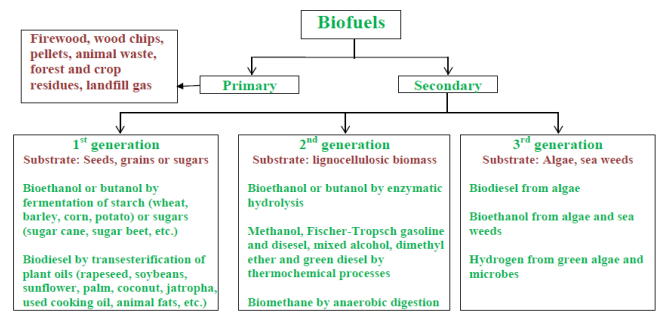
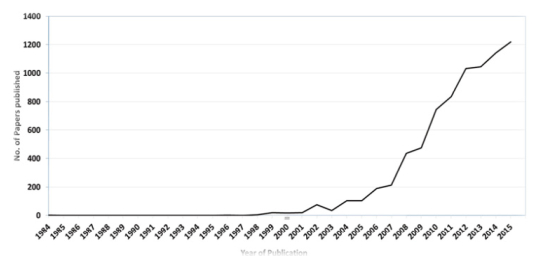
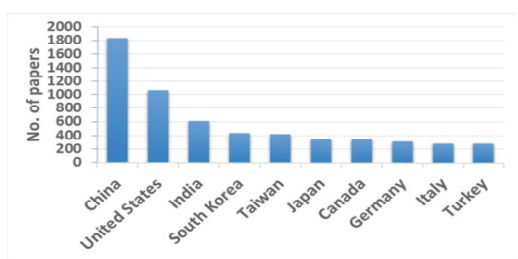
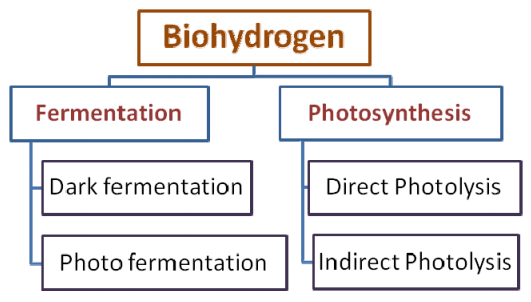
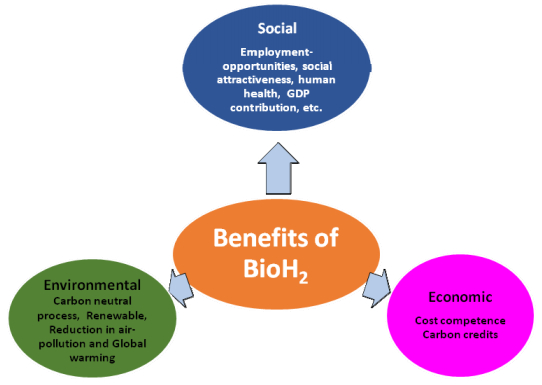


 DownLoad:
DownLoad: